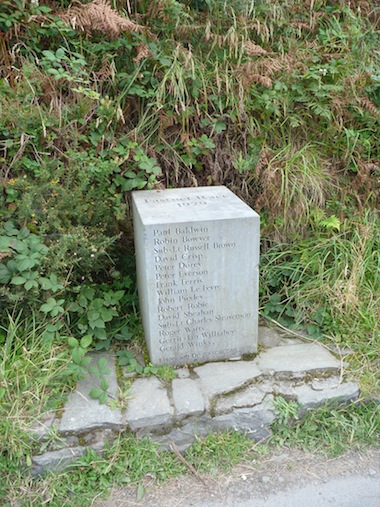The Fastnet Rock has a notorious history and reputation – despite being only 4 miles from the nearest pub
So notorious is it among sailors that you could say the Fastnet Rock is the northern hemisphere’s Cape Horn. Legends have formed around this famous landmark: of storms, and shipwrecks and the terrible events of the RORC race in 1979.
This was how it looked last month, when I sailed out there on a little loop from Crookhaven to Cape Clear Island, the nearest harbours to the rock.

It may surprise people who haven’t sailed there before, but the Fastnet Rock is only six miles from the mainland and four miles from the closest island. With a fair wind you can be grasping your first pint of Murphy’s within the hour at Ciarán Danny Mike’s on Cape Clear or O’Sullivans in Crookhaven.

The tiny North Harbour, Cape Clear Island

The nearest pub to the Fastnet Rock is Ciarán Danny Mike’s, midway between South and North Harbours on Cape Clear Island

And this is the next closest pub, O’Sullivan’s bar in Crookhaven (though the Crookhaven Inn is a few doors further down)
Perhaps because of the terrible events and weather that have shaped our perceptions of this lighthouse its profile does seem quite sobering, even in kind weather. It’s not hard to imagine waves being driven over the lantern room, as the keepers used to recall.
Before lighthouses were automated and the last man left in 1989, keepers on so-called tower lighthouses like the Fastnet were sometimes stranded by bad weather and could not be relieved for weeks. It was a life of measured monotony. The keepers could safely clank open the big gunmetal doors only in calm weather; work there was a civilian incarceration that encouraged – necessitated – lengthy reflection of the sea.
(If you have an interest in the subject, I thoroughly recommend buying a copy of the late Tony Parker’s book Lighthouse, a superb and sometimes moving collection of interviews with lighthouse keepers from the days when they were manned. It is a fascinating reflection of their lives, and human nature in general.)
The Fastnet Rock lighthouse was built to supercede an earlier light built on a clifftop on Cape Clear Island in the early 1800s. It could, in certain conditions, be obscured by a stratum of fog. An inquiry found this to a factor in the foundering of an American sailing packet on nearby West Calf Island in 1847, in which 92 of the 110 passengers and crew were lost. After that, plans for a lighthouse on the Fastnet rock were drawn up.

The old lighthouse (right) on Cape Clear Island and, to the left, the telegraph station from the 1860s, when the island was at the leading edge of the transatlantic information superhighway

The simple memorial to those who lost their lives in the Fastnet Race in 1979, which is laid at North Harbour, Cape Clear Island
The Fastnet Rock tower you see today was started in 1897. There’s a bit of a myth that the rock for it was quarried locally at Crookhaven – not so. Most of the south-west of Ireland is formed of Old Red Sandstone (which actually ranges in colour here from dark grey to green). A Devonian period sedimentary rock, this is prone to marine erosion, hence the characteristic striated appearance of the headlands of West Cork.
The elegant and beautifully waisted tower structure was designed by William Douglass, an engineer with Irish Lights, and was built from coarse-grained Cornish granite that I believe came from the Cheeseswring quarry on Bodmin Moor.
Over 2,000 blocks were cut and shaped to interlock one into another. Each course is said to have been assembled in Cornwall before the granite blocks were shipped to Crookhaven and Cape Clear, whence two teams of builders worked over five years.
Today, the only visitors to the lighthouse are maintenance visits and inspection tours. A delegation from the Royal Ocean Racing Club used to go out and stay there for a few days during the Fastnet Race, but now even involvement that is long past; GPS trackers make it unnecessary.
Being fascinated with the lighthouse, I’ve asked several times if I can join the RORC Fastnet officials and the answer has always been no. (This year I’ll remember to tell them about the excellent Irish soda farls and wheaten bread I make, not to mention cakes. I’ll bet the RORC team marches on its stomach and that this, rather than any yachting knowledge, could be the clincher.)
The rock is a sight all right, and certainly one worth sailing to, but as for getting there and gybing to sail 250 miles straight back to Plymouth: forget it. As I say, the delights of land are too temptingly close. This area is a fantastic place to cruise with some of the nicest villages, pubs and local food you’ll find anywhere in Ireland. I’d be turning right for O’Sullivans.




